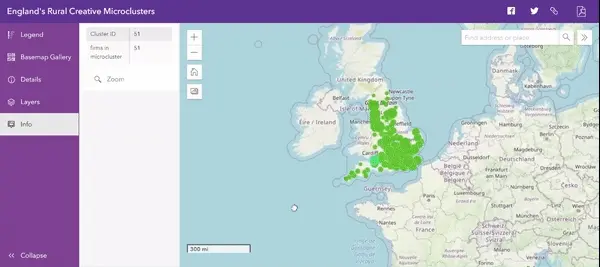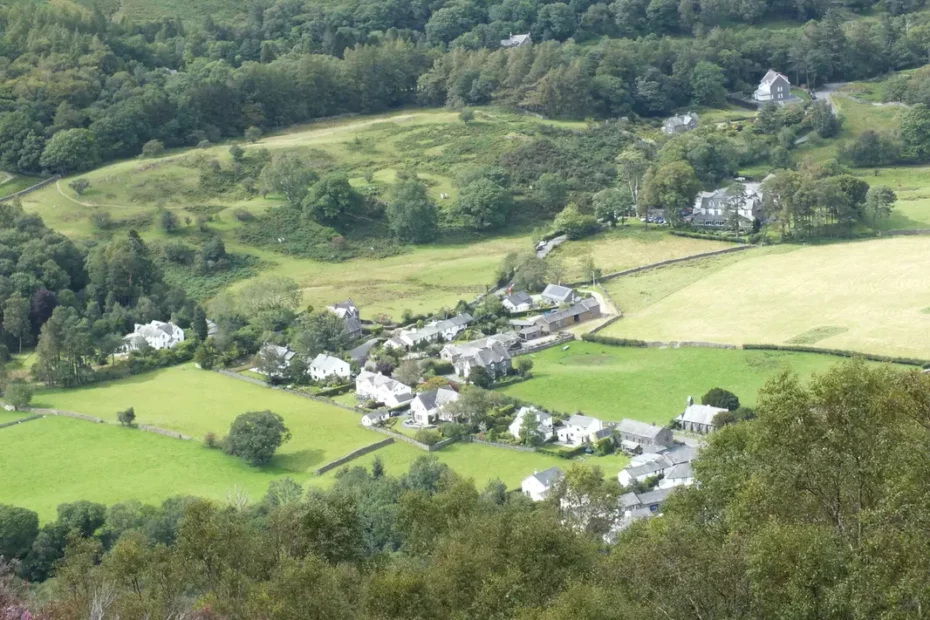More targeted support could unleash the potential of Rural Creative Enterprises
It is well documented that creative industries are clustered in urban areas. This leads to a possible policy bias towards metropolitan areas, in terms of funding intervention and enterprise support. To date there has been little focus on how and whether creative industries cluster in rural areas. New research published today by the AHRC-supported Creative Industries Policy & Evidence Centre (PEC) and National Innovation Centre for Rural Enterprise (NICRE) finds that microclusters are spread widely across England, with around a third of all rural creative firms operating within a cluster. This suggests there is a benefit to creative businesses clustering in rural settings and has important policy implications, particularly within the context of the Levelling Up agenda.
That rural creative firms are found to cluster suggests at ‘external economies of scale’; they become more productive through being co-located. This follows a comparable pattern in urban areas which suggests policy intervention could further support this activity.
The new research ‘Mapping and examining the determinants of England’s rural creative microclusters’ was led by the University of Sussex, and funded by the NICRE. It finds that the drivers of rural creative clusters are the same as those in urban areas. It is only in relation to the ‘presence of informal networks’ that the data wasn’t strong enough to be a determining factor behind rural microclustering, as it is in urban settings. Which suggests the need for policy interventions to encourage the formation of such networks in rural places.
Felton Gallery 45, a microcluster just off the A1 in Northumberland, is a great example of what happens when creative businesses cluster together. Based in a former Victorian pub, Felton Gallery 45 is a hub for five creative businesses, as well as hosting artists working in a variety of materials including acrylics, leather, watercolour, and print, as well as a wool shop.
Jane, a former primary school teacher and manager of the Gallery, said:
“Being on the same site brings massive advantages for the creatives. Each of the artists’ own promotion of their work brings customers into the shared space which has a knock-on effect for the other businesses. This wouldn’t happen if they were based in individual premises or at home, as many of them were before joining us, and it makes sense to form a cluster.
“Being able to see artists at work is also an attraction for our customers and is good for business.”

GIF from an interactive map showing locations of rural microclusters identified in the research
The overriding significance of this new research is that it establishes that rural clusters exist across England and that the factors behind clustering do not differ from urban settings, hence policy interventions could have a significant positive impact in rural locations.
In England rural communities contribute around 16% GVA, equivalent to around £261 billion. There is however considerable room for growth, up to £347 billion higher than now according to some studies (Bosworth et al 2020). The concept of ‘Left Behind Britain’ indicates the existence of pockets of rural life insufficiently served with transport, economic and social infrastructure, education, personal mobility and health.
This paper research also finds evidence that being close to a university supports the emergence of rural creative clusters. This has policy implications in terms of the importance (or otherwise) placed on creative subjects within higher education settings.
There is also an indication, that as in urban settings, the presence of ‘anchor institutions’ such as museums or galleries can support rural clustering and this should also be considered in relation to levelling-up policies.
Related Research Reports
The impact of overseas mergers and acquisitions on UK video games industry
A new scoping study on the economic consequences and potential market failures The BFI’s Resear…
Post-Brexit migration and accessing foreign talent in the Creative Industries
The UK’s departure from the EU has changed the way that British firms trade and work with Euro…
12 facts about the UK’s international trade in creative goods and services
Worldwide exports of creative goods exceeded 500 billion USD in 2015, with a 150% increase since 200…
The migrant and skills needs of creative businesses in the UK
This report details the results of a survey of employers commissioned by the Creative Industries Cou…




